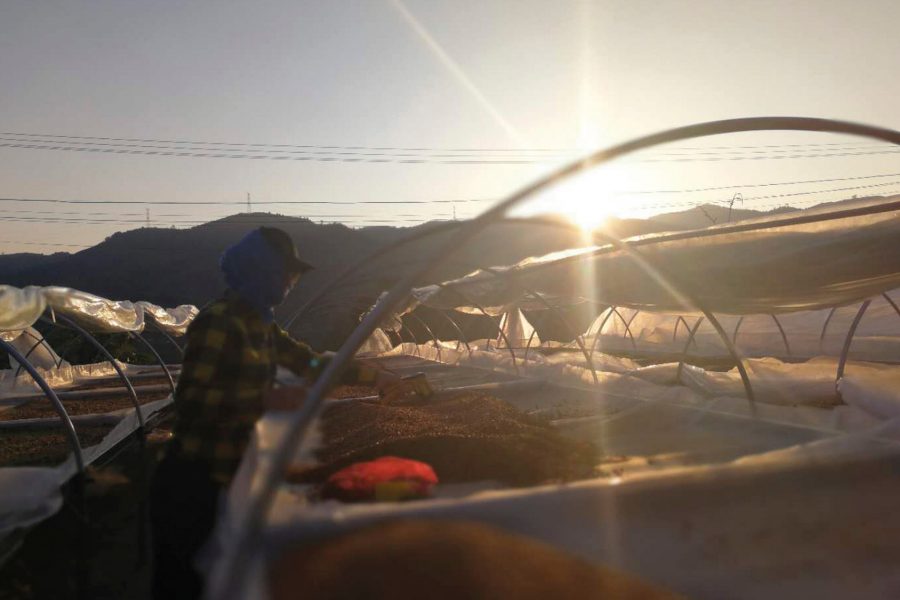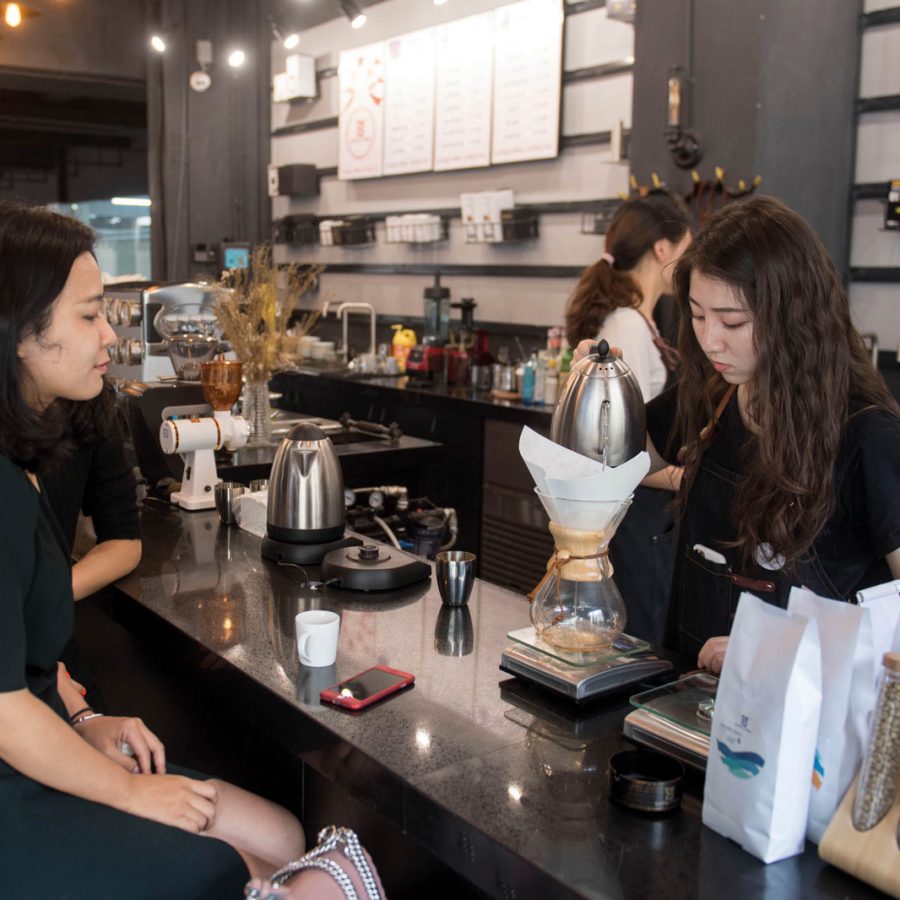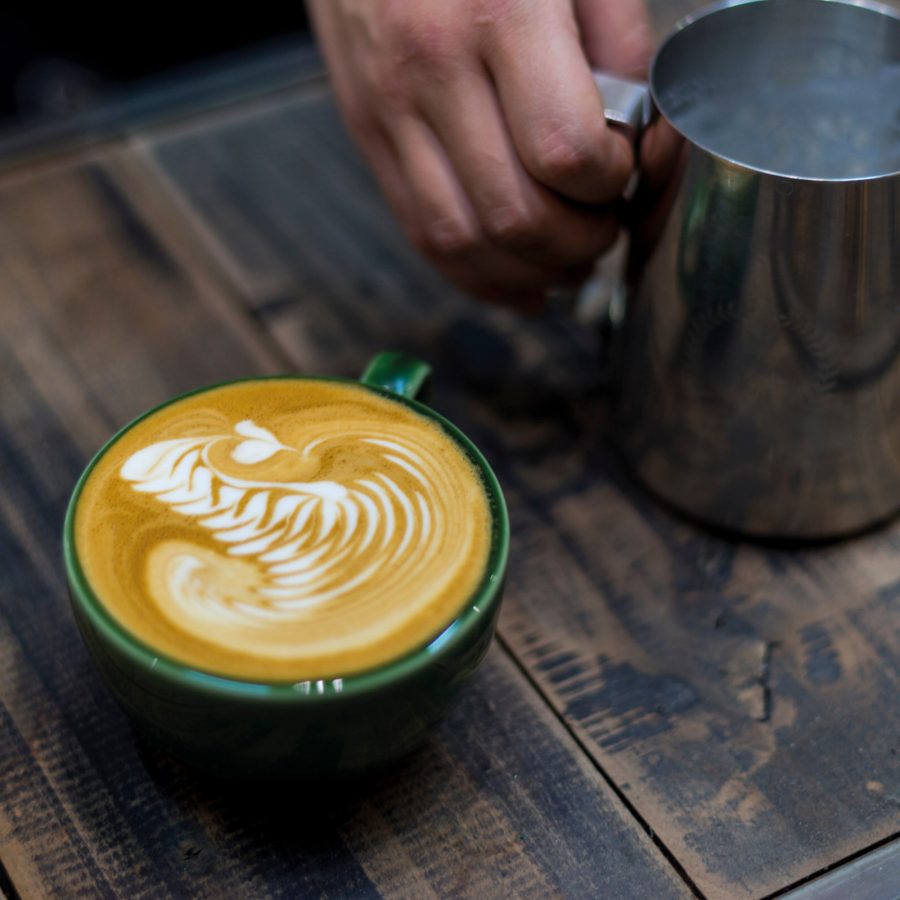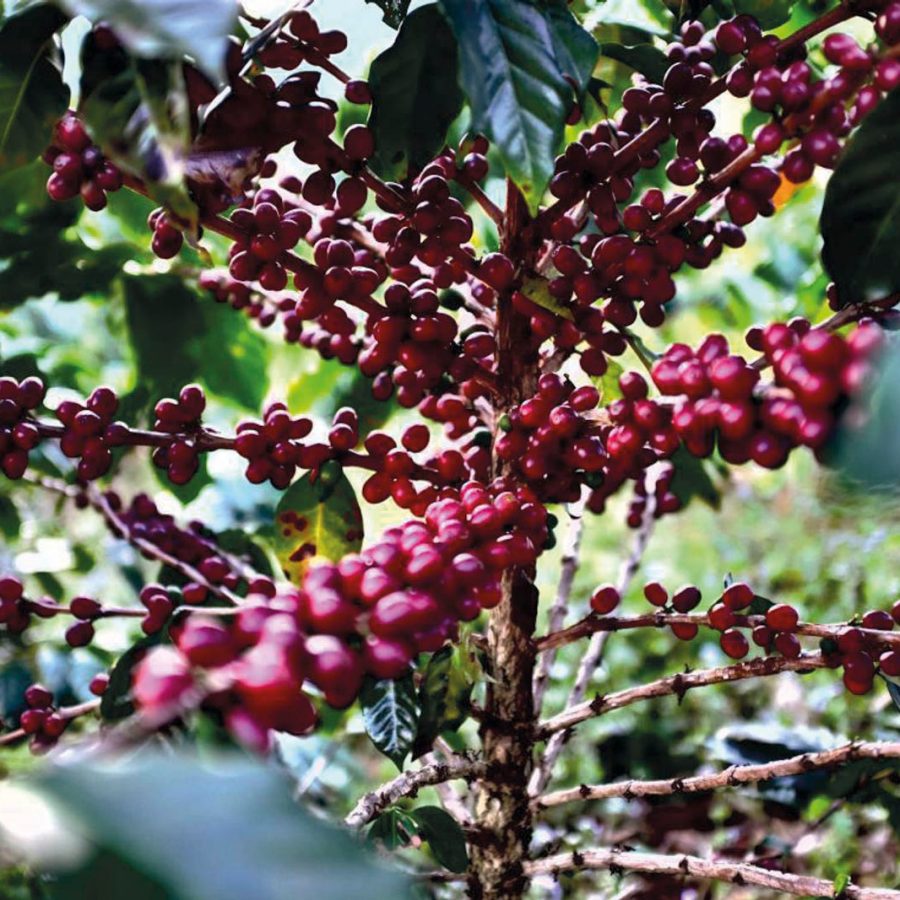Chinese coffee: even better than its tea

The world’s earliest tea cultivation took place in Yunnan province. The Ancient Tea Horse Road, connecting southwest China and the Tibetan plateau, dates back over 2,000 years. Today, old watermills still operate in tea fields seemingly untouched by time, with the exception of roads and speeding cars that cut through the land.
Yunnan’s uniform rows of deep green shrubs have transformed the provincial capital of Kunming into an international trading hub, with buyers from around the world going there for its tea. Its speciality variety, pu’er, has long been thought to safeguard against heart disease and ease digestion. Some vintages command astronomical prices and confer prestige among collectors, the most serious of whom store their precious leaves in well-ventilated cellars.

Credit: Kang Fenggang/picture alliance/ANN/Newscom
And yet I found myself in Yunnan closely exploring not its pu’er harvests, but its coffee fields. This might seem surprising, but coffee – more similar to tea than one might expect – is a growing commodity in the region.
One organisation that wants to make an impact is Yunnan Coffee Traders . ‘We want to put Yunnan on the speciality coffee map,’ says Tim Heinze, managing director of the trade group, as he pours a cup of locally sourced, home-brewed coffee into a cup made of recycled coffee parchment husks. An American who’s been working in China’s coffee industry since 2010, Heinze is certified as a coffee grader and instructor in the field.
His goal to raise the profile of China-made coffee is by no means far-fetched. Globally, more coffee drinkers are sipping Chinese coffee, with Starbucks introducing a single-origin Yunnan variety last year. Ninety-eight percent of coffee grown in China comes from Yunnan, and I’m told it can now be found in 15 countries and counting. That it comes from China’s pu’er hub is expected to bolster the international reputation of the region’s beans.

Yunnan Coffee Traders started offering farm tours two years ago, attracting both domestic and international tourists ranging from industry folk to schoolchildren and avid coffee drinkers. Tours start at a guesthouse that stands between thriving coffee and tea farms, and include cherry picking and an overview of the harvesting process, which stresses ethical and sustainable farming practices.
‘Some say they come for a chance to see China the way it used to be,’ says Heinze. ‘How ironic that this China of the past is fuelling one of the pinnacle traits of modernity – cafe culture – at home and abroad.’

Credit: Hu Chao/Xinhua/Sipa USA/Newscom
Coffee was first introduced to China by French missionaries in the late 19th century. Though production halted in the mid-20th century, the United Nations Development Programme and the World Bank partnered to reintroduce the product in China. In the late 1990s, Nestlé established coffee farms across Yunnan province. In recent years, however, production has gained momentum.
Tea and coffee thrive in the same climates – and Yunnan fits the requirements. Homogeneous tea farms have now made way for mixed-use plantations, and neatly cropped tea terraces are interspersed with coffee shrubs. You can spot the difference from afar thanks to coffee’s irregular planting structure, explains Lisa Wu, a local coffee farmer.
I met Wu at Torch Coffee Labs, a coffee shop and education centre that wouldn’t look out of place in New York’s Brooklyn. Torch aims to promote speciality coffee in the region, working closely with the farming community to encourage training, innovation and, of course, high-quality brews. Wu comes from a long line of tea farmers, but three years ago they made the decision to buy a new plot of land and convert an existing tea plantation into a coffee farm. Tea can fetch a hefty price tag, but the market is flooded, and Wu says that speciality coffee can provide a better source of income.

When working in the sales and distribution side of the industry, Wu would visit her farm once a week at most. After enrolling in Torch’s cupping courses, she developed a real passion and greater knowledge, and now visits at least three or four times a week. Since then, she’s embarked on a quest for the perfect cup – one I happily join as we head to her farm in Xishuangbanna for the day.
Shrubs of catimor (a variety accounting for 95 percent of the coffee in the area) are interspersed with taller trees, which provide protection during the wet season. Once picked, coffee cherries are sorted, sent to a dry mill – a vast warehouse filled with sifters and sieves – and finally bagged and batched to a roaster. Torch co-opened a collective roaster in October 2017, giving farmers autonomy and ownership of their own products. Indeed, this cooperative spirit permeates the coffee industry. ‘There are no trade secrets here,’ says Wu.

China is set to become the world’s third-largest consumer of coffee within the next 10 to 15 years. But there is a generational gap at play: coffee culture is much more part of millennial, urban society. Torch’s cafe is evidence of this, with customers tending towards 20- and 30-somethings. But Heinze is dreaming big, envisaging a day when Yunnan’s coffee and its hints of dark chocolate and tropical fruit will be as appreciated among connoisseurs as pu’er tea’s complex notes.
More inspiration
- China – the Chinese Mainland, Hong Kong SAR, Macao SAR and Taiwan Region
- Hong Kong SAR - English
- Chinese Mainland (China) - English
- Taiwan, China - English
- 香港特別行政區 - 繁體中文
- 中国內地 - 简体中文
- 中國台灣 - 繁體中文
- Africa
- South Africa - English
- Asia
- Bangladesh - English
- Korea - English
- Singapore - English
- Cambodia - English
- 한국 - 한국어
- Sri Lanka - English
- India - English
- Malaysia - English
- Thailand - English
- Indonesia - English
- Maldives - English
- ประเทศไทย - ภาษาไทย
- Indonesia - Bahasa Indonesia
- Myanmar - English
- Vietnam - English
- Japan - English
- Nepal - English
- Việt Nam - tiếng Việt
- 日本 - 日本語
- Philippines - English
- Australasia
- Australia - English
- New Zealand - English